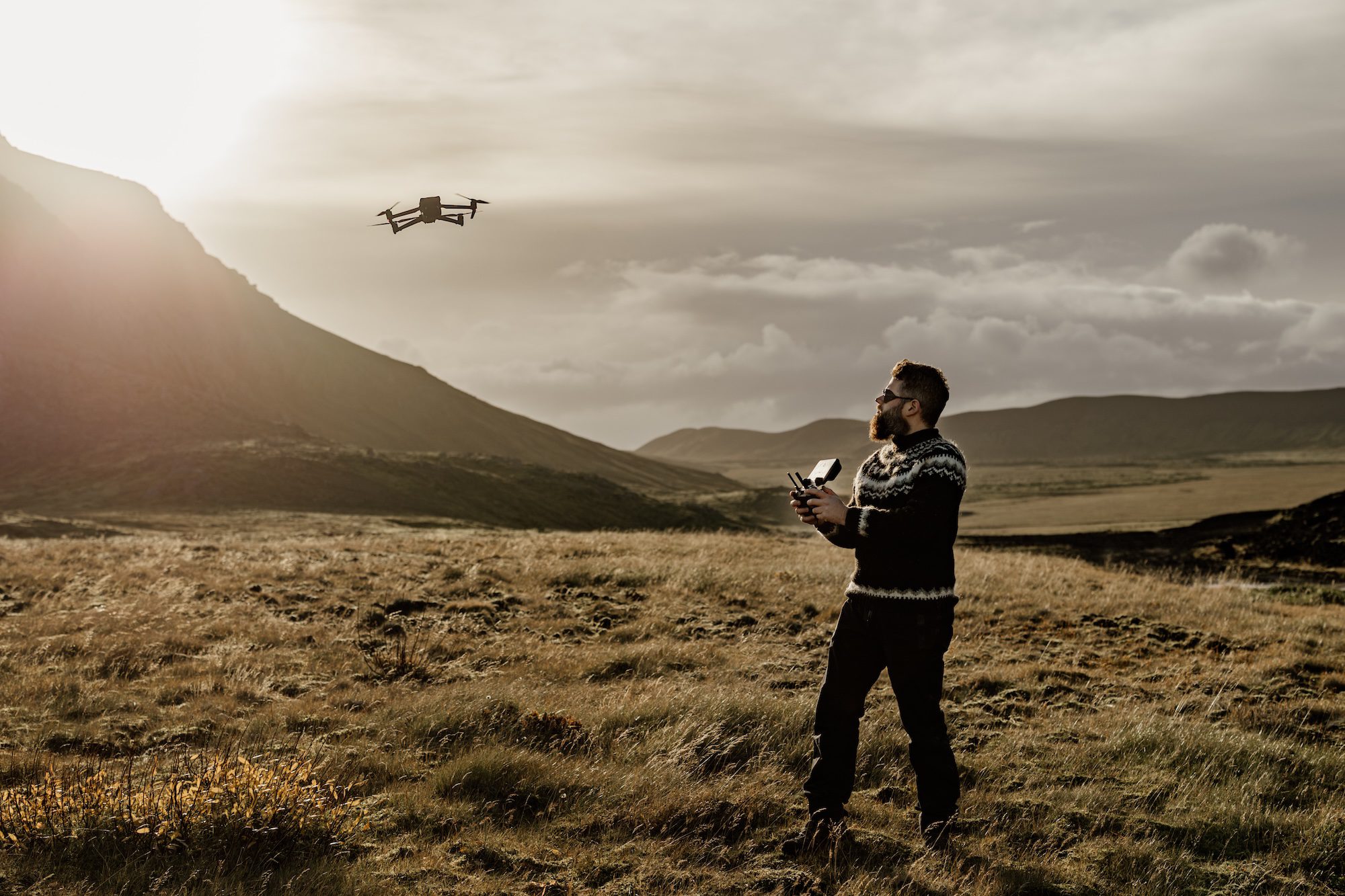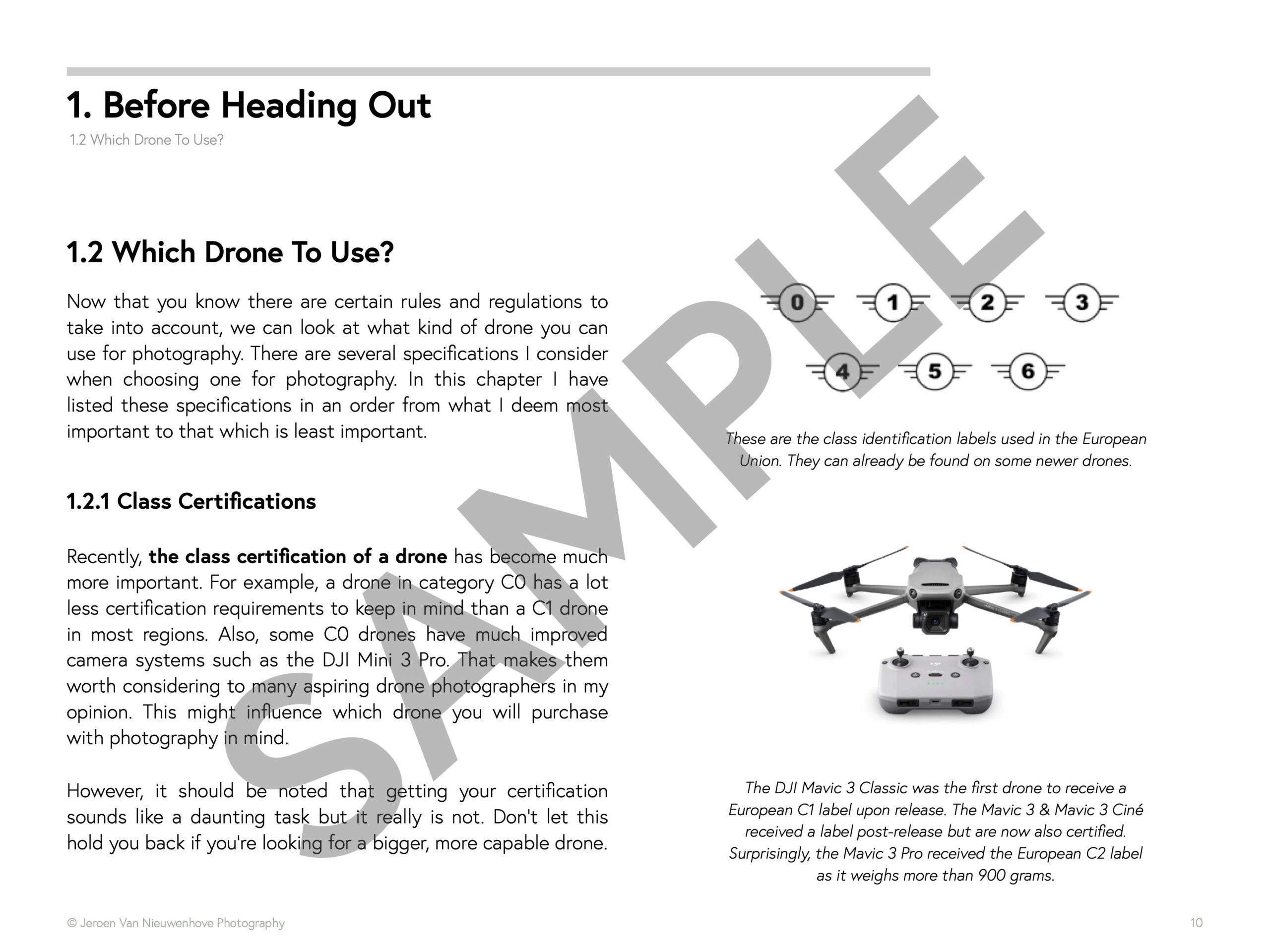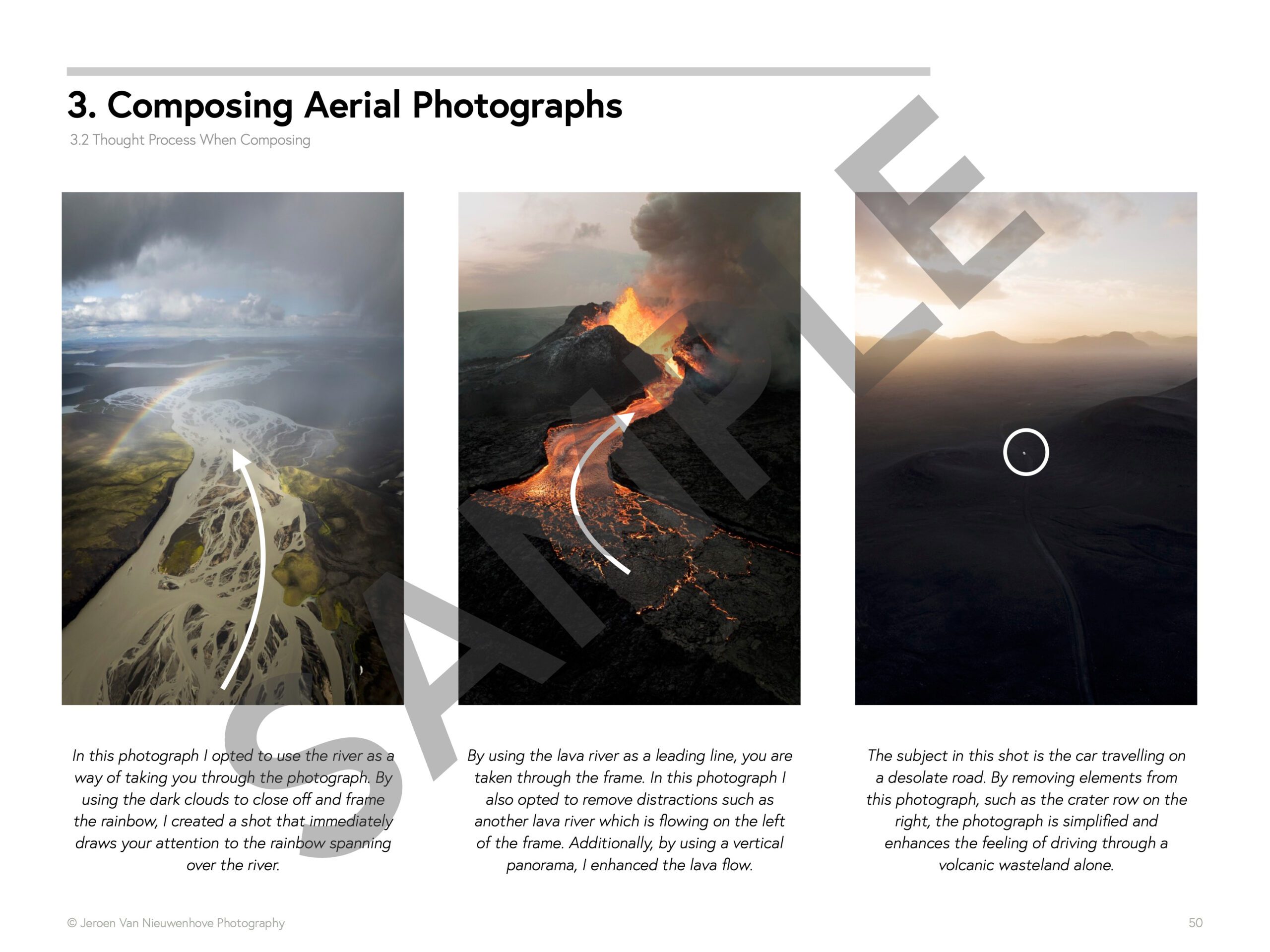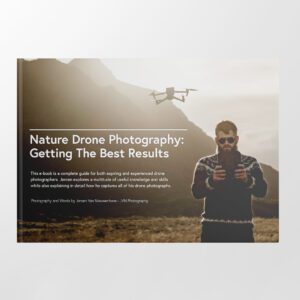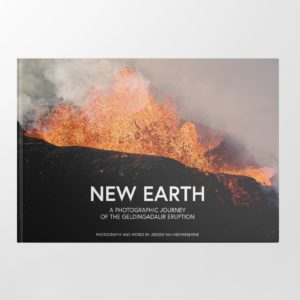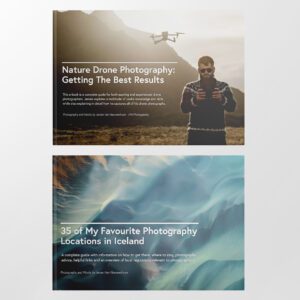One of the most frequently asked questions I get is which drone someone should buy for drone photography in 2026. The drone market is rapidly evolving, and there are currently a lot of options on the market, so it can be hard to decide what you need. I especially find that most drone reviews are heavily focused on video, while most photographers are only interested in the photography aspect (while occasionally recording a few videos). While most drones on the market today provide great image quality, especially when using the techniques I outline in my drone photography e-book & the Drone Photography Masterclass, the choice can still be difficult. In this article, I try to create a clearer picture of what drone you should get as a photographer in 2026.
If you are located in the United States, and are therefore affected by the DJI Ban, you may also want to look at the list of drones that are still relevant today but are perhaps not the latest & greatest model. More importantly, they are likely still available to you!
Disclaimer: This article is not sponsored in any way. However, when you make a purchase using the link in this article, I may earn a small commission. All opinions in this article are my own. If you (dis)agree, I invite you to open a discussion in the comment section. To keep this article relevant, I will keep this article updated when a new drone is released.

Even though its weight and build imply it’s a toy, the DJI Mini 5 Pro can give you high quality images.

Using AEB mode, you can still get really high quality out of the smaller sensor.

The footprint of DJI Mini 5 Pro is incredibly small for such capable drone.
1. The Budget Option: DJI Mini 5 Pro
On a lot of the photo workshops I host, I meet people who bring the Mini 3 Pro/Mini 4 Pro and that is for a good reason! They are the cheapest relevant option for photography as they support RAW images & bracketing. With their successor, the DJI Mini 5 Pro, the potential of this cheaper segment of drones has been increased even more. Mini 5 Pro has a 1 inch sensor which is able to produce high-quality images – especially when using the techniques described in my drone photography e-book. Mini 5 Pro is also able to rotate the camera module 90 degrees, which allowing you to take true vertical photographs and videos. Additionally, if you are located outside of the EU, you can get larger batteries, which extend the flight time.
If you are interested in a more detailed look at the Mini 5 Pro, make sure to check out my Mini 5 Pro review.
Important To Know: Europe’s 120 Meter Above-Takeoff-Point Altitude Limitation On C0 Drones
Given the new EU regulations that went into effect on January 1st 2024, I want to stress that all C0 drones are sold with a severe limitation when flown in the EU, being that they are capped at a maximum altitude of 120 metres above the takeoff point. This applies to any sub 250 gram drone sold globally. This could be a major issue for people flying in areas where there is a lot of height difference. It’s a quirky element in the EU law because the law in most areas stipulate you can not fly higher than 120 metres above the ground, not the takeoff point.
If you want to know more, I go deeper into this matter in a detailed blog where I advise against investing in a C0 drone.
What About DJI Flip?
DJI Flip is DJI’s latest addition to its lower end drone line-up. It resembles the DJI Mini 4 Pro in many specifications but has a quirky new design, which features propeller guards. This little drone seems to be more focused on indoor environments or places where you may fly in very tight spaces.
If you want to read in more detail what the new DJI Flip to the table, you can read my detailed blog about the DJI Flip.
What I Like
- Mini 5 Pro is below 250 grams, which puts it in the C0 category. This means you don’t need to get specific licensing to fly it in many regions, while also being able to fly it in more places.
- The image quality is surprisingly good for such small drone.
- Mini 5 Pro has a small footprint in your photography bag.
- Because of the low battery capacity, batteries charge very quickly.
- The camera module can turn 90 degrees so you can take true vertical images.
What I Don’t Like
- Mini 5 Pro is very light, maybe even too light, which means they can struggle in windy environments. In strong winds, this drone has less stability compared to heavier ones, resulting in faster battery drain and a higher chance of motion blur in photographs and unstable videos.
- The sensor is only 12 megapixels.
- Single shots aren’t particularly usable for prints.
- The larger and heavier batteries are not available on the EU market as that puts the drone over 250 grams.
Buy the DJI Mini 5 Pro: https://geni.us/jvn-djimini5pro
See the full specifications: https://www.dji.com/mini-5-pro/specs
Buy the DJI Flip: https://geni.us/jvn-djiflip
See the full specifications: https://www.dji.com/flip/specs

Even though the sensors are only 12 megapixels, they can still capture vibrant high quality images.

Having the 3x telephoto lens at your disposal means you can capture different angles to familiar scenes.

The DJI Air 3S is a more than welcome upgrade over its predecessor, the DJI Air 3.
2. The Best All-Rounder: DJI Air 3S
This drone is likely the best option for most people. The recently released DJI Air 3S turned into a DJI Air 3, or even a DJI Mini 4 Pro, on steroids. While the DJI Air 3S is an incremental update over the DJI Air 3, the improvements are definitely noteworthy. It doesn’t just sport 2 lenses (and 2 sensors), it also comes with dramatically improved obstacle avoidance (LiDAR), Ocusync 4 for a better transmission, and much greater flight times (45+ minutes). The main camera now has a very capable 1″ sensor, which shines in low light conditions. With this drone you can achieve high-quality photographs when using the techniques described in my drone photography e-book.
What I Like
- The extended battery life compared to cheaper drones is very welcome and will allow you to feel less stressed while also increasing the number of photographs you can take during your flights.
- Having an additional focal length increases the number of perspectives you get when photographing.
- The main camera has a 1″ sensor, which is dramatically improved over the cheaper drone models. It is also very capable in lower light conditions.
- It’s possible to transfer the power of almost empty batteries to other batteries to optimise battery usage.
- The wind resistance is excellent in strong winds.
- The Ocusync 4 transmission provides better range and smoother transmissions.
- The DJI RC2 remote controller, which comes with the drone, has external antennas.
What I Don’t Like
- The image sensor is only 12 megapixels, which means less qualitative images with less resolution compared to more expensive drones.
- Single shots aren’t particularly usable for prints.
- Taking bracketed shots can take much longer than on more expensive drones.
- The battery charging dock is large and feels unnecessarily bulky.
If you want a more detailed look at the DJI Air 3S, make sure to have a look at my detailed preview.
Buy the DJI Air 3S: https://geni.us/jvn-air3s
See the full specifications: https://www.dji.com/air-3s/specs

The high quality and high resolution images produced by these drones is next to none in the prosumer category.

The Mavic 4 Pro’s wide angle camera allows you to capture high detail single shots, with room to crop if needed.

The DJI Mavic 4 Pro is the largest and most expensive prosumer drone today but delivers outstanding quality and possibilities.
3. The Premium Choice: DJI Mavic 4 Pro
While there is always something bigger & better in the drone world (eg. DJI Inspire 3 with a full-frame camera), the most realistic high-end choice for consumers and prosumer photographers today is the DJI Mavic 4 Pro. The DJI Mavic 4 Pro is a 3-camera powerhouse. It carries a 25 megapixel Micro Four Thirds wide-angle camera (1x), a 12 megapixel 1/1.3″ telephoto camera (2.5x) and a 1/1.5″ telephoto camera (6x). It offers the best of the best in the foldable drone category.
What I Like
- The wide-angle camera has an excellent 4/3 sensor with great image quality, superb dynamic range and a 25 megapixel resolution.
- This drone, being as heavy as it is, means that it’s very stable in strong winds.
- The obstacle avoidance is best-in-class and even works in extremely low light situations.
- The transmission technology, OcuSync 4+ is extremely reliable.
- The battery life is excellent!
- The wide-angle lens has a variable aperture.
- Having two additional focal lengths greatly increases the variety of shots you can take using this drone.
- The 3x telephoto lens uses the great sensor from the DJI Mini 4 (Pro) and DJI Air 3.
- The charging brick allows parallel charging, which means you can charge up to three batteries at the same time.
What I Don’t Like
- The DJI Mavic 4 Pro is very expensive.
- The footprint of the drone is large and adds a considerable weight to your photography backpack (1063 gram).
- It is classed as a C2 drone, which means stricter regulations and additional certifications apply.
- Each focal length has a different sensor with different quality and image resolution.
- The camera settings are unique between focal lengths, which can get confusing when changing between lenses.
If you want to know more, I published my first thoughts on the brand-new DJI Mavic 4 Pro. Read it on my blog!
Buy the DJI Mavic 4 Pro: https://geni.us/jvn-mavic4pro
See the full specifications: https://www.dji.com/mavic-4-pro/specs

The use of the telephoto cameras on more recent drones has opened up a new world to me. I can revisit locations and photograph them from different angles and perspectives.
Important To Know: The DJI Ban In The United States
On December 23rd 2025, DJI was added to the Covered list of the FCC. This means in a nutshell that future DJI drones won’t be available to you if you are located in the United States. If you want to read into all the details, make sure to check out my detailed blog about the DJI ban in the U.S. and what it means for you as a drone pilot and photographer.
This ban makes the drones below even more important to look into as they may be the only ones available to you!
These Drones Are Still Relevant In 2026 For Photography
While the previously mentioned drones are the most likely choices on the market today, there are still a lot of older and still relevant drones available. These drones are likely to be cheaper than their newer counterparts while still providing you with good image quality. These can be good options if you can find them for a good price on the second-hand or discounted market.
1. DJI Air 3
The DJI Air 3 is somewhat of a DJI Mini 3/4 Pro on steroids. While it doesn’t only sport 2 lenses (and 2 sensors), it also comes with better obstacle avoidance, Ocusync 4 for a better transmission, and much greater flight times (40+ minutes). However, the Air 3 is quite a bit heavier than its predecessor, the DJI Air 2s, while also having a smaller sensor with less resolution (12mp 1/1.3 inch sensor vs a 20mp 1 inch sensor).
Buy the DJI Air 3: https://geni.us/jvn-air3
See the full specifications: https://www.dji.com/air-3/specs

The DJI Air 3 is a very capable drone for most starting drone & aerial photographers.
2. DJI Mavic 3 Pro & DJI Mavic 3 Classic
Building on the success of the original Mavic 3, the DJI Mavic 3 Pro & DJI Mavic 3 Classic are solid photography workhorses. Both of them come with the same great wide-angle camera (and sensor) of the Mavic 3. While the DJI Mavic 3 Classic has a single camera, the DJI Mavic 3 Pro has an additional 3x telephoto lens and a 7x telephoto camera. I also wrote a detailed 6-month review on the DJI Mavic 3 Pro in case you need any convincing.
Buy the DJI Mavic 3 Classic: https://geni.us/jvn-mavic3classic
See the full specifications: https://www.dji.com/mavic-3-classic/specs
Buy the DJI Mavic 3 Pro: https://geni.us/jvn-mavic3pro
See the full specifications: https://www.dji.com/mavic-3-pro/specs

Even though the DJI Mavic 4 Pro is now available, it doesn’t make the predecessors any less capable. I have flown hundreds of hours with these drones and captured stellar images with them.
3. DJI Mavic 3
When the DJI Mavic 3 Pro came to market, it was replacing the original Mavic 3. The original Mavic 3 comes with the same great wide-angle camera (and sensor) and has almost all the same features of the Pro model. The only real difference is the lack of 3x telephoto lens and a worse 7x telephoto camera on the original model. However, this drone can still be found in some stores and is sometimes cheaper than the DJI Mavic 3 Classic.
Buy the DJI Mavic 3: https://geni.us/jvn-mavic3
See the full specifications: https://www.dji.com/mavic-3/specs

While I didn’t use the Mavic 3 specifically, the images you get out of the wide-angle lens are the same quality as those of the Mavic 3 Classic and Pro.
4. DJI Air 2s
I used the DJI Air 2s for a year and a half before I replaced it in favour of a model with more battery life. I always enjoyed using this nifty little drone as the image quality was the same as my beloved DJI Mavic 2 Pro. The only downside in comparison was the lack of variable aperture. However, the image quality of the 1 inch sensor and the 20 megapixel resolution really appealed to me.
Buy the DJI Air 2s: https://geni.us/jvn-djiair2s
See the full specifications: https://www.dji.com/air-2s/specs

I put the DJI Air 2s through its paces and managed to capture some of my favourite images to date. Even though it’s small, it’s more than capable if you can deal with the limited battery life (compared to more modern drones).
5. DJI Mavic 2 Pro
The DJI Mavic 2 Pro was long the most used drone for drone photographers and videographers. I have great memories using one and I even captured some of my best shots using it. Even when the Mavic 3 came out, the benefits over the Mavic 2 Pro were marginal (leaving the increased battery life out of the equation). Having an excellent one inch sensor, with 20 megapixel resolution, and a variable aperture meant you could capture high quality images with this compact drone. Today it can be difficult to find them but if you can get one for a good price, it’s definitely still a good companion.
Buy the DJI Mavic 2 Pro: https://geni.us/jvn-mavic2pro
See the full specifications: https://www.dji.com/mavic-2/info#specs

This award-winning photograph was captured using the DJI Mavic 2 Pro by using the techniques outlined in my drone photography e-book.
Frequently Asked Questions
Below are some of the most frequently asked questions I get when people are looking to buy their very first drone or upgrade to a newer model.
What Drone Should I Buy For Photography In 2026?
There’s no single “best” drone for everyone. The ideal choice depends on your budget, experience, and image quality goals. Popular and capable drones for photography in 2026 include mid-range models like the DJI Air 3S and higher-end options such as the DJI Mavic 4 Pro, which offer excellent sensors, stability, and creative flexibility. I wrote this article specifically to help you figure out what fits your needs.
Do I Need To Register My Drone For Photography?
Yes. In most countries, consumer and prosumer drones above a certain weight (often around 250 g) must be registered with your local aviation authority before you fly legally. Always check local rules, especially when travelling internationally.
What Features Matter Most For Drone Photography?
Key features to consider include sensor size and resolution, camera quality (still and video), flight time, stability in wind, obstacle avoidance, and support for RAW image capture (which every modern drone has). These directly affect image quality and how easily you can shoot in challenging conditions.
Are Older Drones Still Good For Photography In 2026?
Yes, of course! Many slightly older drones, such as the DJI Air 2S, Mavic 2 Pro, and earlier Mavic 3 models, still deliver excellent image quality and can offer outstanding value when bought second-hand or at reduced prices.
What Is The Best Drone For Beginners?
For beginners, lighter and more compact drones with strong stabilisation, intuitive controls, and reliable obstacle avoidance are ideal. Entry-to-mid-range drones can be easier to learn on while still producing high-quality aerial photos.
Do Drone Photography Skills Matter More Than Gear?
Absolutely! Understanding composition, light, weather, and exposure settings has a far greater impact on your results than owning the latest drone. Skill development and experience will consistently improve your aerial photography more than gear upgrades alone. I created the Drone Photography Masterclass with the purpose of helping people improve their skills, using any kind of drone, rather than focusing on newer and better gear.
Can I Use Any Drone In All Countries?
No. Drone regulations vary significantly between countries. Some locations require registration, permits, or additional licences, while others restrict where and how you can fly. Always research and follow local drone laws before travelling or flying abroad.
What Accessories Should I Use For Drone Photography?
Essential & recommended accessories include spare batteries, fast and reliable memory cards, a protective carrying case, and a controller with a bright screen for use in sunny conditions.
How Long Do Drones Fly For Photography?
Most drones offer flight times between 25 and 50 minutes per battery under ideal conditions. Wind, temperature, and flying style can reduce this, so carrying multiple batteries is strongly recommended.
Where Can I Learn Advanced Drone Photography Techniques?
Advanced techniques can be learned through detailed tutorials, structured courses, e-books, and hands-on practice. I created the Drone Photography Masterclass with the purpose of helping people improve their skills, using any kind of drone, rather than focusing on newer and better gear.
DISCOUNT
The Drone Photography Masterclass
Nigel Danson & Jeroen Van Nieuwenhove‘s complete drone masterclass will explore everything you need to know to start creating the best aerial photographs using any type of drone in 50+ detailed videos. Whether you are a complete beginner or an advanced drone pilot, this video course contains a vast amount of information to level up your drone photography skills.
Learn Drone Photography With My E-Book
Want to learn how to get the best results with your newly purchased drone? I wrote the most comprehensive guide available on drone photography which teaches you a technique to get the DSLR-like results out of even the cheapest drones.
In 125 detailed pages I explore everything you need to know to start creating the best photographs using any type of drone. Whether you are a complete beginner or an advanced drone pilot, this e-book contains a vast amount of information to level up your drone photography skills.
What to Expect?
- A 125-page educational PDF about nature drone photography with very detailed explanations
- Which drone to get for photography and why
- Important settings and configuration options
- A list of useful skills & tips
- A list of useful accessories and what not to buy at all
- How to research locations for drone photography
- How to compose with a drone and insight into Jeroen’s thought process with plenty of examples
- Thoughtfully planning ahead for your drone shoot
- The how and why of creating bracketed images
- The how and why of shooting HDR panoramas
- What challenges you might face and how to deal with them
- Common mistakes & how to deal with them
- How to stitch your panoramas together
Use EBOOK20 to get 20% off your Nature Drone Photography (E-Book) purchase!
Discover Jeroen’s Photo Workshops in Iceland, Greenland & Beyond
Ready to take your photography to the next level? Join me, Jeroen Van Nieuwenhove, on unforgettable photo workshops in Iceland, Greenland, Antarctica and other exciting destinations. Whether your passion is wildlife photography, bird photography, landscape adventures, or mastering drone photography, each workshop is designed to give you hands-on guidance in some of the world’s most spectacular locations.
From puffins in the midnight sun to Arctic foxes in the wild, from glaciers and volcanoes to dramatic coastlines seen by drone – these journeys are more than workshops; they’re once-in-a-lifetime experiences. Group sizes are kept small, ensuring personal mentoring and plenty of shooting opportunities.
Looking for something specific? Check out Jeroen’s…
- Wildlife & Bird Photography Workshops (Puffins, Arctic Foxes)
- Drone Photography Workshops
- Photo Workshops in Iceland
- Photo Workshops in Greenland
Spots are limited – secure your place today!
Support Jeroen’s Work
As an independent photographer, Jeroen partially relies on your support to keep producing worthwhile content such as blogs, photographs, books and much more. If you want to support his work, it is possible to do so by buying his e-books & books or prints.
You can also sign up to the newsletter to stay up to date on new blog posts, projects, workshops and other interesting information.
Thank you for considering!

